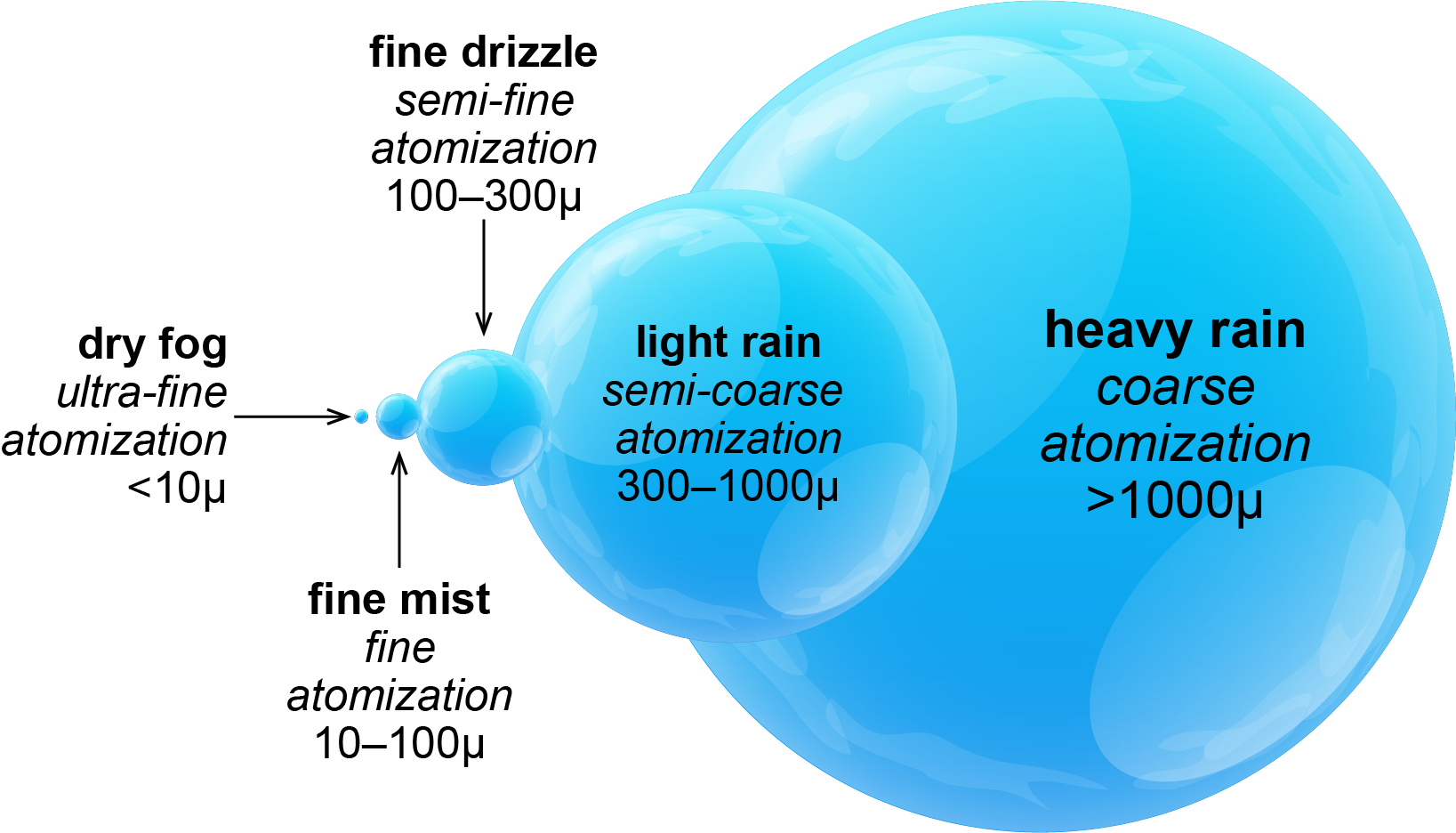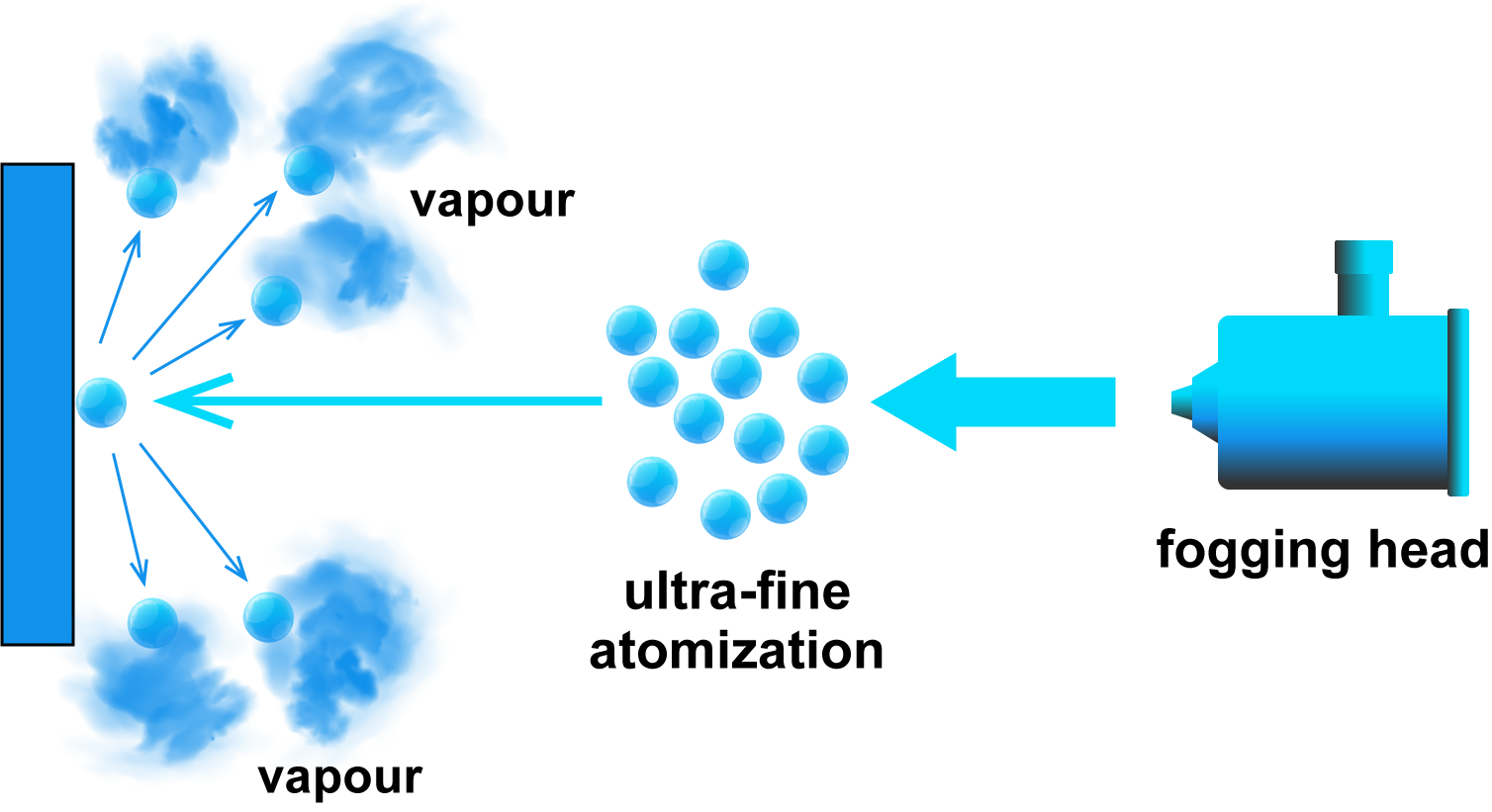Aerial Surface Disinfection (ASD) is commonly preferred, and in Europe, hydrogen peroxide (H2O2) and peracetic acid (PAA) are widely used.
ASD relies on two categories of technology: vaporization and “fogging”. Vapor hydrogen peroxide (VHP) systems involve heating 30-35% H2O2 to a vapor phase and pushing it into the volume to be disinfected through a ventilator. VHP must be used in fully airtight volumes (area, room, isolator, chamber, airlock, port, etc.) to control the risk of personnel exposure. VHP may also present some limitation due to cost and practicalities of use.
The interest for fogging techniques increased over the last few years, due to evolutions in technology and disinfection process control, improvement of their efficacy, and the response to other operational constraints.
| Examples of product-related requirements: | Examples of equipment-related requirements: |

Figure 1 – Size of droplets in various “atomization” systems
Different fogging technologies are available; some requiring compressed air or relying on an ultrasonic device, while others use a technology more fitting in an animal environment. All are classified according to the size of droplets generated, as illustrated in Figure 1.

Figure 2 – Dry fogging principles
There is no official definition of “dry fog” and the wording is used both by manufacturers of VHP and liquid fogging. The goal is to ensure that the system does not create a damp environment. A dry fogging system disperses ultra-fine droplets (aerosol) into the air. The droplets float / bounce off surfaces until they are transformed into vapor. This process is rather quick – allowing for an even distribution throughout the volume. The dry fog can be used with all surfaces including hard-to-reach areas (Figure 2).
Dry fogging can employ solutions containing H2O2 and/or PAA, which are effective against a broad range of micro-organisms. The technique is non-corrosive, non-toxic and environmentally safe, at doses defined by the biocide regulation (for more information, read “The Experts View”).

